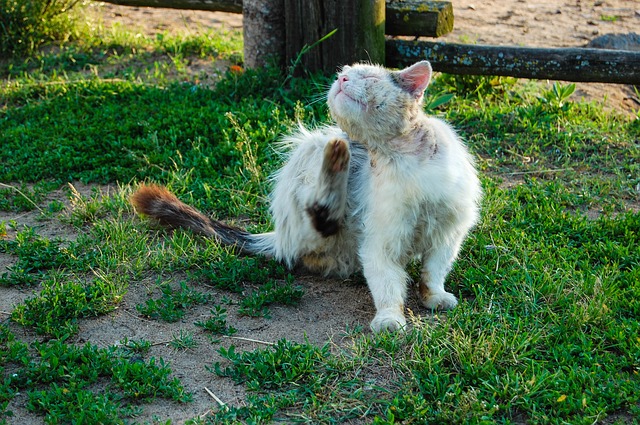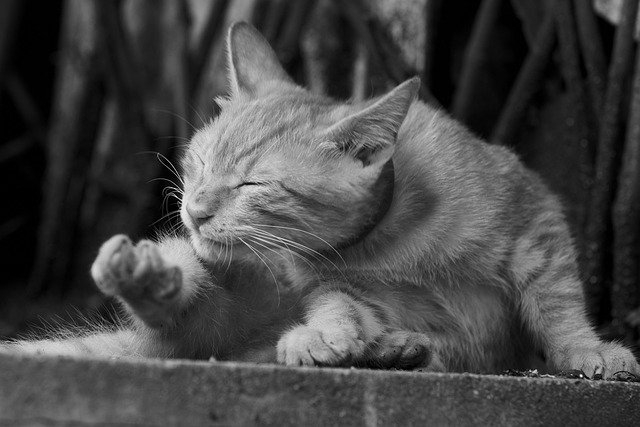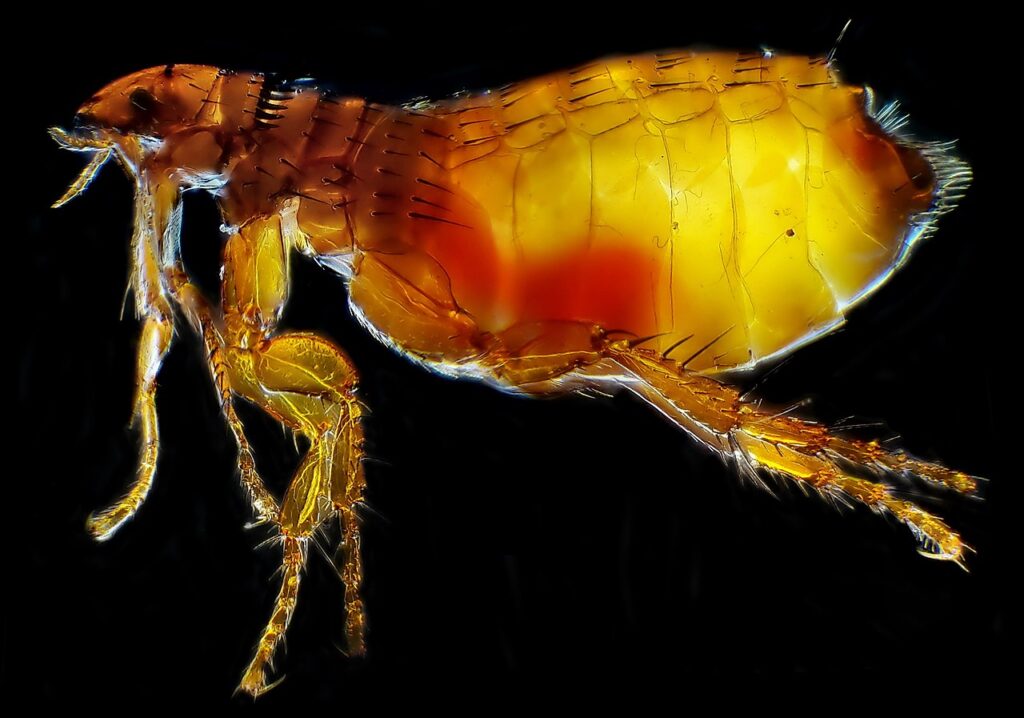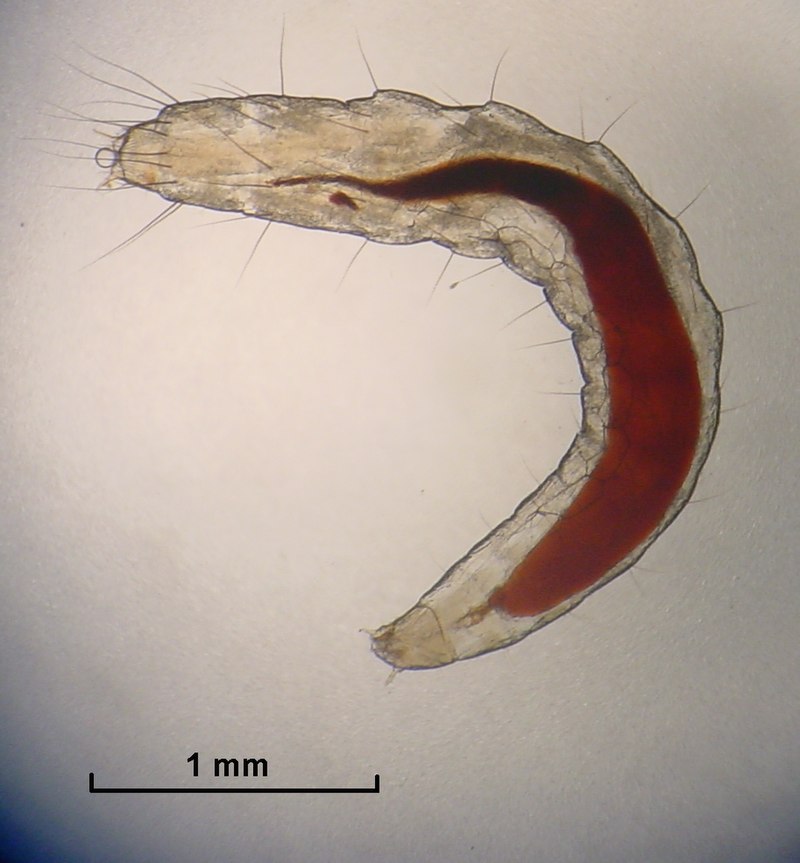Allowing your feline friend to live indoors will prevent him from escaping, from getting into trouble with other animals, and from other dangerous situations that they may encounter outside. However, is it true that keeping them indoors will help them prevent fleas, ticks, mites, and other parasites?
If you noticed that your indoor cat has developed fleas, then you’re on the right track because for this post, we are going to know if indoor cats can get fleas, the possible ways they might get them, how to prevent your indoor cat from having them, and how to get rid if your cats already have fleas.
Can indoor cats get fleas?
Whether they live indoors, outdoors, or both, all cats can get parasites, such as fleas, ticks, and intestinal worms. Although indoor cats have a lower risk of having parasites than outdoor cats, it does not exempt them from picking up those troublesome critters.
In addition, you should also know that fleas may be tiny, but they are very powerful. As a matter of fact, fleas can easily leap on cats as they walk by, and some can even jump up to 7 inches high using their strong back legs! They also multiply so quickly that a single flea can lay a maximum of 50 eggs a day.
So, this leads us to the question: how can my indoor cat get fleas?

Possible ways indoor cats can get fleas
1. From other pets
If you have other pets in the house that live alongside your feline friend, it is highly possible that the parasites came from them, especially if they can go outside. Once inside, these fleas may jump to your indoor cat. Even if you don’t have other pets in the house, visiting pets can be culprits, too.
Even if you use anti-flea and tick products, some of them will take time to kill the parasites that may have leaped to your pet. This means that they may transfer from one animal to another before they feel the effects of the medicine.
Using preventive flea medicine is better than nothing. It is more important to regularly check your home or visiting pets for the presence of fleas and other parasites. After all, it is good to be proactive at all times.
2. From humans
Although fleas prefer animals as their host, it does not mean that they won’t bite humans and jump into their clothes or shoes. They cannot fly, but they can jump really high, and if they hitch a ride on you, they will effortlessly transfer from you to another pet, which can possibly be your indoor cat. Eggs, larvae, or pupae may also migrate and breed to your clothes or personal items.
As much as you want to protect your cat from fleas, it won’t be feasible to check every visitor that comes into your house. Instead, what you can do is clean your home regularly, especially after your visitor leaves your home. Sweep the floor, mop it afterward, or you can also vacuum your carpet and upholstery to eliminate flea eggs that may be sitting there. You may also need to wash the sheet and towels used by your guest.
3. From wild animals
Although an indoor cat will not go out to catch its prey, it may still get the opportunity to hunt inside your home. This is because wild animals, such as rodents, mice, or rats, can make a way inside your house – this is especially true if you live in the countryside. It is highly possible that your indoor cat might be infected because those wild animals brought fleas or have dropped flea’s eggs in your home.
Although cats themselves are enough to deter wild animals from entering your home, you can also do your part by keeping your kitchen free from food and waste. It is just as important to ensure that there are no entry points for such wild animals. Seal up those gaps on your window and doors. Ensure that your bin is always closed, and you may also need to empty it regularly.

4. From going out
A cat cannot be contained all his life. Even if he is an indoor cat, he might need to go out more than once for his regular veterinary checkup or grooming purposes. During these outdoor trips, your cat might contact other animals that possibly have fleas.
The best thing you can do in this kind of situation is to make sure that your cat receives regular flea treatment prescribed by his veterinarian.
5. From using second-hand items
If you like buying things from flea markets, antique stores, or any type of establishment that sells second-hand and used items, you may purchase an item with fleas or even flea eggs. Make sure that before bringing home any second-hand item – especially those that will be used by your cat – clean and disinfect it thoroughly.
6. When you move into a new home or environment
If you just moved into a new home, you are not sure if the previous inhabitants of that house do not leave fleas behind. Fleas can be dormant for months while they wait for their next host.
Therefore, you must clean your new home as if it is already infested with parasites. You can either have a professional help you with the cleaning or do it with at-home methods. Keep in mind that parasites stay on rugs, furniture, bedding, and any other object in your home. So, make sure to clean very thoroughly, not leaving any furniture uncleaned.
How do I know if my cat has fleas?
Fleas can be uncomfortable for both you and your feline friend. Because they spread very quickly among your pets or even in humans, you need to know the signs and symptoms of flea infestation.
Below are the common signs of fleas on cats:
- Intense scratching and biting of their skin – if your cat is excessively scratching his body, it might be because he is already infested with fleas. In some cases, you may also be itchy and see red bumps on your skin, indicating that you have been bitten by fleas.

- Presence of live fleas – the most apparent sign of flea infestation is the presence of fleas on your cat’s coat. However, it may be hard to spot fleas because they are tiny and move very quickly. You may try to look at the base of your cat’s tail, around the neck, or on their back.
- Flea dirt – as mentioned earlier, is a reddish-brown to the black speck that looks like black pepper or grains of soil. If the section around the speck becomes reddish-brown in color, it is flea dirt. To make sure if it is flea dirt, you may try taking a damp towel or cotton then wipe the specks.
- Tapeworm – the presence of tapeworm in your cat may mean that they might be infested with fleas. This is because tapeworms may dwell inside fleas. When your cat is grooming, he may inadvertently consume the flea, which will cause the tapeworm to be transmitted to him.
- Anemia – if you have an indoor kitten, a flea infestation may cause excessive blood loss. If your kitten is weak and has pale gums, it is likely that she is anemic.
- Miliary dermatitis – miliary dermatitis is a type of skin reaction seen in cats who are allergic to the saliva of fleas. Cats with this skin condition will appear to have small scabs on different parts of their body. Usually, it is seen on their back or around their neck. Aside from scabs, hair loss may also be developed.
- Other signs of a flea infestation to your cat include restlessness, shaking of the head, and irritated skin.

Can you prevent fleas on indoor cats?
To avoid flea infestations in your indoor cats, the very first thing you should do is to ensure that they get their regular flea prevention on time. Your veterinarian may suggest which flea prevention is the best for your cat, so make sure to consult them first before taking any action.
It is just as essential to check your cat’s coat regularly. This way, you may see signs of fleas, such as the flea dirt that looks like black pepper. You may also need to observe your cat’s behavior. If he is unusually scratching more often, you may need to use a flea comb to check if there is a flea infestation with your cat.
Read also: Life expectancy of indoor cats
How to protect cats from fleas?
So, how exactly can you protect your indoor cat from flea infestation?
Here are some of the ways you can do to protect your cat and your home from fleas:
- Vacuum regularly – One of the keys to preventing fleas from coming and multiplying in your home is to make sure to vacuum your home regularly, especially your rugs, carpet, and furniture. You may also need to pay extra attention to the area near the windows and doors. After that, make sure to throw the dirt bin outside the garbage can.
- Mow your lawn – Parasites like to live in damp areas, piles of leaves, the mound of rocks, and tall weeds. If one of your outdoor pets walked on tall grasses, there’s a high risk of getting fleas on their hair. Therefore, make sure to mow your lawn regularly.
- Groom your pets regularly – regardless of whether you are trying to prevent your cat from having fleas or not, it is essential to groom your pet regularly. Not only will it keep them clean and strengthen the bond between you two, but it will also allow you to look for any signs of flea infestation.
- Don’t bring your shoes inside the house – Fleas may hitchhike by jumping into your shoes. Therefore, make sure to leave your shoes outside. It’s better if you can clean your shoes regularly.
- Wash the cloth inside your home at least once a week – Not only will it keep your home clean, but washing at least once a week will ensure that fleas will not breed inside your home. Wash your beddings, pillowcases, sofa cover, and other fabrics using hot water so that there’s no chance for any parasite to survive.
How to get rid of fleas from my indoor cats?
If your cat has already been infested by fleas, here are some of the things you can do to get rid of them:
- Bathe your cat with a flea shampoo – commercially-available shampoos are designed to treat and eliminate fleas. It is best to get your veterinarian’s recommendation first, as they know what’s best for your cat.
- Use a fogger – if the infestation has not stopped, you might have to use flea-killing chemicals and spray them on your home. However, such products should be handled with extra care. Make sure to follow the instructions thoroughly, or hire a professional to do the job.
- Clean your home – the vital thing you should do to prevent further infestation of fleas is to do general cleaning to eliminate fleas and flea eggs that may hatch inside your home.
Final Thought
By now, you probably know that your indoor cat, like all other cats, can be a host to parasites, such as fleas. Although there’s a lower chance for them to get infected by parasites, you should still take the necessary precautions to prevent flea eggs from hatching, which can affect your cat’s health in the long run. It is just as important to know the first signs of flea infestation and take the initial steps to prevent the flea from multiplying in your home.
As always, never treat your cat with something you’re not sure of. Make sure to have them checked first by the veterinarian because they will know the best treatment for your indoor cat.